Abstract
Driven by modern technology, our exploration of the ocean is no longer limited to the surface. The deep sea, the last unknown domain on Earth, is gradually unveiling its mysteries. Underwater acoustic sensor networks, as an emerging technology, are transforming the way we acquire and analyze ocean data. They not only enable real-time monitoring of dynamics in the deep ocean but also provide strong support for the development of marine resources, environmental protection, and scientific research.
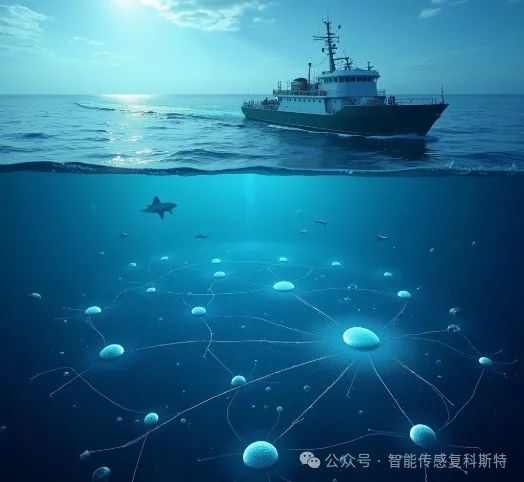
Overview of Underwater Acoustic Sensor Networks
Underwater acoustic sensor networks are wireless networks that transmit information using sound waves in water. Unlike radio waves commonly used in daily life, sound waves are the only effective means for long-distance transmission in water. This network consists of multiple sensor nodes, which can be fixed, such as buoys or anchors submerged underwater, or mobile, like remotely operated vehicles (ROVs) or autonomous underwater vehicles (AUVs). These nodes use acoustic communication and networking to transmit monitoring data to shore, providing us with valuable ocean data.
The primary task of underwater acoustic sensor networks is to use the acoustic network as a means of information transmission, with underwater sensors serving as windows for information acquisition, ultimately delivering underwater data to observers. The application prospects of this network are extensive, including oceanographic data acquisition, marine pollution monitoring, coastal development, disaster prevention, underwater navigation assistance, marine resource exploration, and scientific data acquisition.
Historical Development of Underwater Acoustic Sensor Networks
1
Early Development (Early 20th Century)
The earliest underwater acoustic communication technology can be traced back to the early 20th century, primarily using amplitude modulation (AM) and single sideband (SSB) underwater telephone technology for analog data.
2
Application of Digital Frequency Shift Keying Technology (1960s)
With the advancement of digital technology, underwater digital frequency shift keying (FSK) technology began to be applied in the early 1960s, which exhibited robustness to time and frequency spreading of the channel.
3
Emergence of Coherent Acoustic Communication Technology (1990s)
In the late 1990s, coherent acoustic communication technology emerged, which improved the bandwidth efficiency of limited bandwidth acoustic channels compared to incoherent communication. However, due to the harsh and complex nature of acoustic channels, coherent communication technology was initially not widely accepted.
4
Further Development of Acoustic Communication Technology (Early 21st Century)
With the development of chip technology and digital communication theory, many complex channel equalization techniques have been realized, promoting the development of coherent acoustic communication technology and shifting focus to horizontal channel communication research.
5
Emergence of Underwater Acoustic Modems
A milestone component in underwater networks is the emergence of underwater acoustic modems, marking the further maturity of underwater acoustic sensor network technology.
6
Concept of Autonomous Ocean Sampling Network (AOSN)
The earliest proposed application concept of underwater acoustic networks was the Autonomous Ocean Sampling Network (AOSN) in 2000, which provided a new direction for the development of underwater acoustic sensor networks.
7
Implementation of the Seaweb Project
The United States began an annual experiment called Seaweb in 1999, aimed at validating the concept of underwater acoustic networks and promoting the development of related technologies.
8
Research Progress in China
China began research on underwater acoustic communication during the Eighth Five-Year Plan, focusing mainly on low bit rate long-distance communication and high bit rate short-distance communication. During the Tenth Five-Year Plan, China began related research on underwater acoustic communication networks and has established experimental systems with multiple nodes.
9
Applications of Modern Underwater Acoustic Sensor Networks
Modern underwater acoustic sensor networks can acquire different information based on various types of underwater sensors and are applied in numerous fields such as oceanographic data acquisition, marine pollution monitoring, coastal development, and disaster prevention.
Topology of Underwater Acoustic Sensor Networks
The topology of underwater acoustic sensor networks can be divided into two main categories: centralized networks and distributed peer-to-peer networks.
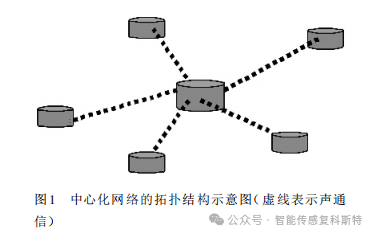
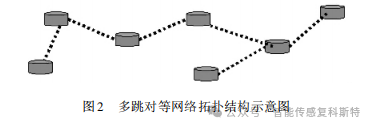
Centralized Networks
In a centralized network, communication among nodes is achieved through a central node, which is also responsible for connecting the network to the backbone network.
The disadvantage of this structure is the existence of a single point of failure; the failure of the central node may lead to the failure of the entire network.
Due to the limited range of individual modems, the coverage of centralized networks is also restricted.
Distributed Peer-to-Peer Networks
In peer-to-peer networks, there is no central node governing all nodes, and each node has relatively equal rights.
Fully connected peer-to-peer networks reduce routing demands, but when nodes are dispersed over a large area, the power required for communication significantly increases, potentially leading to “near-far” problems.
Multi-hop peer-to-peer networks communicate only between adjacent nodes, with information transmitted from the source to the destination through multiple hops between nodes, covering larger areas, with the network’s effective range depending on the number of nodes.
Related Concepts of Underwater Acoustic Sensor Network Layers
The network protocol stack concepts followed by underwater acoustic sensor networks are similar to those of commonly used network protocol stacks, with the basic three layers including the physical layer, data link layer, and network layer. Additionally, there are transport and application layers.
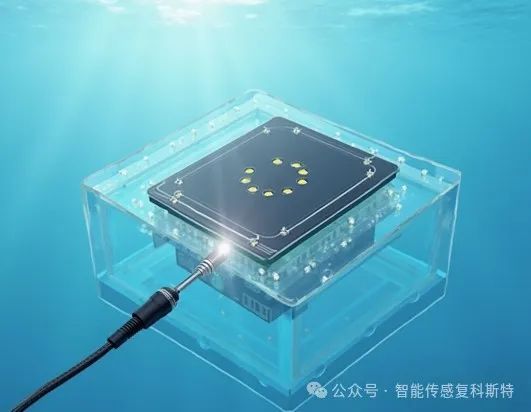
1
Physical Layer
The physical layer is responsible for effective data transmission using the characteristics of the transmission medium and corresponding modulation methods. In underwater acoustic networks, the physical layer needs to convert information bits into acoustic signals and convert received acoustic signals back into information bits, which is the primary task of underwater acoustic modems.
Issues concerning the physical layer include media conversion (e.g., converting electrical signals to acoustic signals), bandwidth utilization efficiency, and channel adaptability.
Common modulation methods used in underwater communication are divided into incoherent modulation (e.g., frequency shift keying) and coherent modulation methods (e.g., phase shift keying and orthogonal amplitude modulation).
2
Data Link Layer
The data link layer addresses how multiple users can reasonably and effectively utilize the channel, i.e., the media access control (MAC) problem, including media access methods and error control.
Media access methods can be subdivided into multiple access methods and random access methods, involving frequency division multiplexing, time division multiplexing, and code division multiplexing technologies.
Common error control mechanisms include error detection and retransmission and forward error correction techniques.
3
Network Layer
The network layer addresses routing issues, i.e., how to determine the path between source and destination nodes, with routing methods depending on the network’s topology.
In underwater acoustic sensor networks, routing protocols include proactive, reactive, and geographic routing protocols, each facing challenges posed by the unique characteristics of acoustic channels.
Technical Development and Challenges
The development of underwater acoustic sensor networks has a long history; as early as the early 20th century, underwater acoustic communication technology began to emerge. The earliest underwater acoustic communication can be traced back to amplitude modulation of analog data and single sideband underwater telephones. With technological advancements, digital frequency shift keying (DSK) technology was applied in the early 1990s, significantly improving the efficiency of underwater acoustic communication. However, the unique underwater environment, such as high latency, significant attenuation, multipath effects, and frequency shifts, poses numerous challenges to the development of underwater network technology.
01
Physical Factors Affecting Underwater Acoustic Communication
Propagation Delay and Delay Variation
Sound waves travel much slower in water than electromagnetic waves, resulting in a propagation delay of about 5 seconds per kilometer, which affects the network’s throughput. At the same time, the time-varying nature of underwater acoustic channels causes high delay variance, presenting difficulties for time-based protocols.
Propagation Loss
Underwater acoustic signals encounter losses during propagation, including absorption, scattering, and acoustic energy leakage, limiting the effective transmission distance of signals. To achieve long-distance communication, low bit rates must be chosen, while high bit rates can only be realized over short distances.
Multipath Effects
Multipath phenomena occur due to the presence of multiple propagation paths between the sound source and receiver. This leads to the reception of multiple signals arriving at different times, severely affecting communication quality.
Environmental Noise
Noise sources in the underwater environment are diverse, including ship noise, wind and wave noise, and biological noise. These noises reduce the signal-to-noise ratio, further affecting the performance of underwater acoustic communication.
01
Impact on Each Layer of the Network Protocol Stack
Physical Layer
It needs to address how to utilize the characteristics of the transmission medium and corresponding modulation methods for effective data transmission. The choice of incoherent and coherent modulation methods, channel equalization techniques, and the application of multi-carrier modulation technologies (such as orthogonal frequency division multiplexing) are all influenced by these physical factors.
Data Link Layer
It involves media access control and error control. The selection and design of multiple access methods (such as frequency division multiplexing, time division multiplexing, and code division multiplexing) and random access methods (such as carrier sense multiple access and collision avoidance multiple access) must consider the characteristics of underwater acoustic channels.
Network Layer
Solving routing issues relies on the network’s topology, and the characteristics of underwater acoustic channels significantly influence the choice of routing methods.
Key Components of Underwater Acoustic Sensor Network Layers
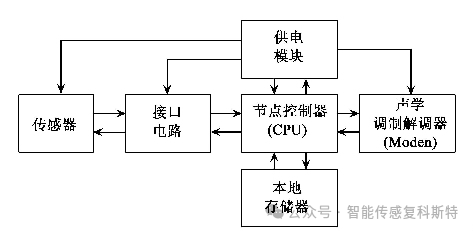
Basic Composition of Sensor Nodes
1
Sensor Nodes
Sensor nodes are the fundamental units of the network. They acquire parameters of underwater biological, chemical, and physical phenomena through different types of sensors and convert these parameters into electrical signals, which are then converted into digital signals through interface circuits.
The node controller is responsible for packaging data according to network protocols and sending it to other nodes via the acoustic modem, while also managing power, local data access, and some local computational functions.
Sensor nodes can include various types of sensors, such as temperature, salinity, and depth sensors, acoustic Doppler current profilers, chemical composition sensors, metal ion deposition layer electrode sensors, as well as acoustic sensors for monitoring marine acoustic data.
2
Repeaters
The main function of repeaters is to forward data from sensor nodes or other repeaters; they do not directly collect data but convert received acoustic signals into electrical signals, reshape or transform them, and then resend them according to routing protocols.
3
Main Nodes and Gateways
Main nodes and gateways are critical nodes for accessing land or aerial conventional networks in underwater acoustic sensor networks. They concentrate on receiving data packets from underwater acoustic networks and converting them into packets that can be received by wireless or wired networks before forwarding them out.
Main nodes and gateways can be a single entity on a carrier or deployed separately, containing acoustic modems for communication with underwater networks and radio or wired modems for communication with satellite or shore-based networks.
4
Acoustic Modems
Acoustic modems are the key technology of underwater acoustic sensor networks, responsible for modulating and demodulating acoustic signals between underwater nodes, and are the core components for achieving underwater communication.
5
Surface Stations
Surface stations can be dedicated buoys or surface vessels, acting as a bridge between underwater networks and surface networks, enabling the transfer of underwater data to the shore.
Current Implementation of Underwater Sensor Networks – Introduction to the Seaweb Experiment
Background of the Seaweb Project
BACKGROUND
Seaweb is a relatively successful underwater network project in the United States, aimed at constructing deployable autonomous distribution systems for coastal area surveillance, anti-submarine warfare, and mine countermeasure systems, as well as implementing command, control, communication, and navigation functions.
Purpose of the Experiment
PURPOSE
The purpose of the Seaweb experiment is to validate the feasibility of underwater acoustic networks and promote the development of related technologies. The experiment started in a certain year and is conducted annually to advance underwater acoustic communication and underwater network technology.
Content of the Experiment
CONTENT
In the Seaweb experiment, MFSK modulation technology was used, with nodes divided into three clusters. Within each cluster, TDMA multiplexing technology was employed, while FDMA multiplexing technology was used between clusters, although the channel utilization was low and the transmission rate limited.
Results of the Experiment
RESULT
Experimental results indicated that under specific experimental conditions, effective connections between nodes could reach 4 km, and the effective distance from gateway to node was 7 km. The Seaweb experiment validated the concept of underwater acoustic networks and led to significant improvements in underwater acoustic modems.
Technological Development and Limitations
DEVELOPMENT/BOUNDEDNESS
The Seaweb experiment introduced the concept of server management, which manages gateways and member nodes, monitors, displays, and records network status, and establishes routing between gateways, laying the groundwork for future network self-configuration and dynamic control.
The experiment also exposed system limitations, such as limited memory and processing speed that restricted firmware improvements, and the multiplexing methods sacrificed precious bandwidth.
Future Applications
APPLICATION
The success of Seaweb has spurred various application plans, including marine research, maritime surveillance, fleet operation experiments, shallow-water anti-submarine warfare, underwater communication, as well as navigation and mine countermeasure systems.
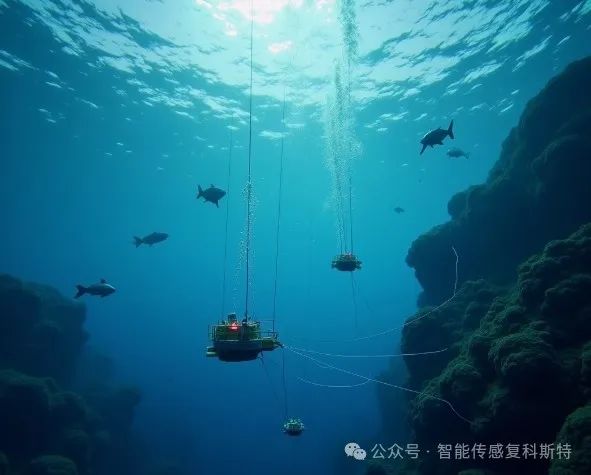
China’s Development and Prospects
China has also made significant progress in underwater acoustic communication and underwater network technology. As early as the Eighth Five-Year Plan, institutions such as Xiamen University, Harbin Engineering University, and the Institute of Acoustics of the Chinese Academy of Sciences began research on underwater acoustic communication, focusing mainly on low bit rate long-distance communication and high bit rate short-distance communication.
With continuous technological advancements, during the Tenth Five-Year Plan, China began related research on underwater acoustic communication networks, and several experimental systems with multiple nodes have emerged. It is expected that during the Eleventh Five-Year Plan, China’s underwater acoustic sensor network technology will make significant progress. The vast coastline provides a broad prospect for the application of China’s underwater acoustic sensor networks, with huge potential for both civilian and military applications.
Conclusion
Underwater acoustic sensor networks are not only a technological advancement but also an important tool for exploring and protecting the ocean. With the continuous development of technology, we have reason to believe that in the future, we will be able to understand the ocean more deeply and utilize marine resources more effectively, making greater contributions to human development.
Excerpted from Li Shuqiu, Li Qihu, & Zhang Chunhua. (2023). Development and Application of Underwater Acoustic Sensor Networks. Special Issue on Sonar Technology and Its Applications, 10(2), 123-145. Retrieved December 17, 2023.
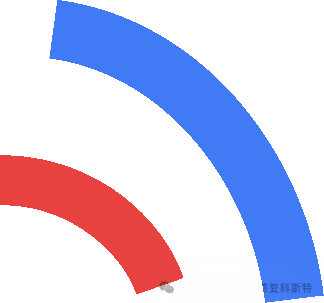
Click the blue words to follow us
